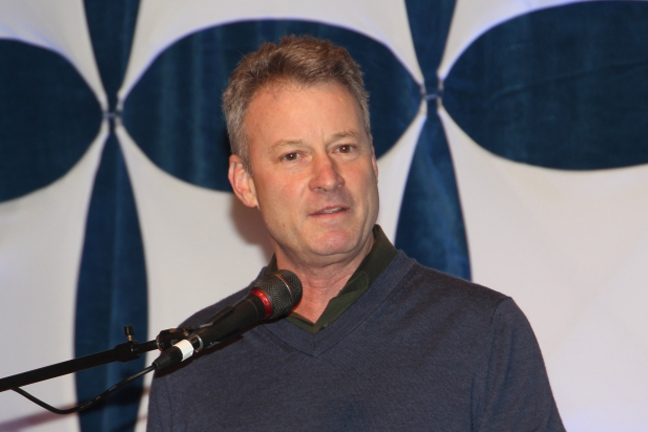
Agricultural News
Author Says Important Lessons of the 'Dust Bowl' All too Easy to Forget
Fri, 07 Mar 2014 17:15:07 CST

As the generation that lived through the Dust Bowl dwindles with each passing day, authors like Timothy Egan and filmmakers like Ken Burns endeavored to capture the flavor of the era and the lessons to be learned before they were lost to prosperity.
Egan, the author of the award-winning book "The Worst Hard Times," upon which the PBS series "The Dust Bowl" was based, spoke Friday at the National Cowboy Museum and Western Heritage Center in Oklahoma City. He spoke with Radio Oklahoma Network Farm Director Ron Hays about the lessons learned from those hard times. (You can hear their conversation by clicking on the LISTEN BAR at the bottom of this story.)
Egan said the drought of the last few years in much of the Southern Plains raised some alarm bells, but the dissimilarity of the recent drought to the 30s has tended to allay concerns for others.
"The drought forces people to look at what we're doing, our limited resources, whether we're using water well. But in another respect it does not. We are not seeing dust storms themselves on the magnitude we saw because we have learned some things."
What really caused the Dust Bowl in the 30s?
"It's really simple, really, really simple. There's always been drought in this part of the country, so that's not the cause. There's always been high winds, so that's not the cause. But what was different? Ask yourself what was missing in the Dirty 30s. Well, they ripped up the grass. So, you had an area about the size of the state of Pennsylvania that used to have native grass on it, good for bison, good for cattle. It was gone. And so, when those winds came, they just took that exposed area and took it to sky."
Egan said a cowboy he spoke with who had seen the peak of the Dust Bowl put it most succinctly, "Wrong side up."
It was the perceptions and lives of the people like that cowboy who actually lived through it, Egan said, that compelled him to research the era.
"In the early 20th century there was actually more homesteading going on out here than in any other part of the United States. It didn't happen in the 19th Century, it happened in the 20th Century. So, those folks were solid people who had never had a piece of dirt in their life. Suddenly they had something. And, living through that, as two-thirds of the people didn't go anywhere, they lived through it. The myth is that they fled to California. Well, some of them did, but two-thirds of them didn't go anywhere. That, to me, is just the most compelling human story-how do you put up with a time when the land betrays you? How do you put up with a time when there's no Social Security and you're living on brine tumbleweeds?.. So all these amazing stories that seem like they're from a lost era but, in fact, are from a generation that is still barely with us, that was the fascinating part of the story."
Egan said that another theme that compelled him to write the book was that human folly repeats itself-that we as human beings tend to have a few good years and think things will never turn bad again. He said he has fears the same forces of amnesia are repeating themselves when it comes to the Ogallala aquifer.
"A lot of folks in the old Dust Bowl area will tell you that-the same thing the USGS is telling them-is that they're drawing down that thing. Too many people are putting too many straws in that big old body of fresh water the size of the Great Lakes. And it would be nice to look at it as a whole as they tried to get people to do in the Dust Bowl."
He said that while he is optimistic by nature, he is afraid we have forgotten the bad years and may not heed those warnings.
The enduring legacy of the Dust Bowl has been scientific conservation efforts which have benefitted the whole world, Egan said. He cited the examples of contour plowing, letting the land rest, looking at the preservation of land as an effort to be tackled cooperatively.
That cooperative effort may be more difficult now than it was in the past, Egan said. As farms have gotten larger over the years, people have left the farms and small towns and moved to the cities. Where once one-third of Americans made their living on the farm in the early 20th Century, now less than one percent do. In the Dust Bowl areas, there are fewer people living there than 100 years ago despite the tremendous growth in the U.S. population.
WebReadyTM Powered by WireReady® NSI
Top Agricultural News
More Headlines...


















